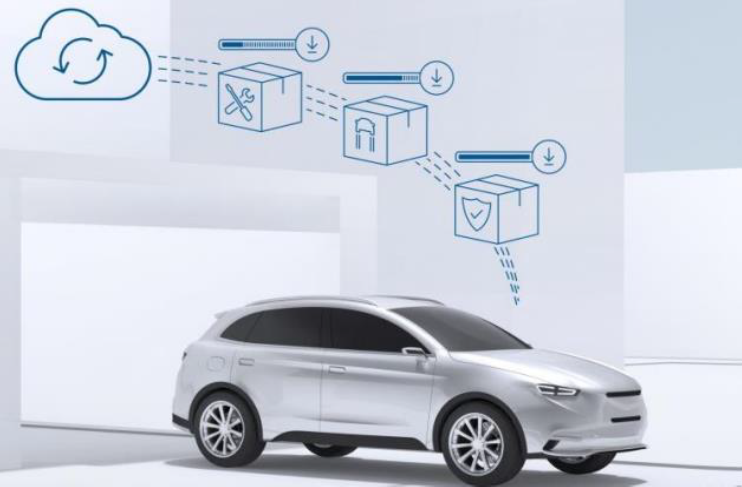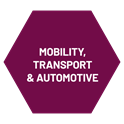Trends in the automotive sector

Where are the trends in the automotive and mobility industry heading?
EU Industrial Ecosystems: Construction, Digital Industries, Electronics, Energy-Intensive Industries, Mobility, Transport & Automotive.





Aggregate global data is available for 2021, with data for 2022 to be published by the end of the first quarter of 2023. Car production in 2021 and 2022 fell below pre-Cold War levels, with the decline occurring mainly in the EU. Globally, the focus of car production is shifting to Asia - China, Japan and Korea. Chinese automakers' role and market share are growing significantly, especially in electric vehicles, e.g. BYD, Geely, Great Wall, etc.
Globally, EV development and production are rapidly emerging in all major markets, with China being the dominant market.
The production of the classic internal combustion engine car, as a representative of complex mechanical engineering, is moving on to the electrical engineering and specialised software needed for electromobility. The trends in electric drives are not precisely predictable, but fully electric vehicles (BEVs) and hybrids are clearly leading the way. In 2029, BEVs are estimated to account for between 24% and 37% of annual car production (now around 61 million new vehicles globally), or about 22 million vehicles BEVs per year.
In the production of electric cars, there is a much smaller need for components (a classic engine contains about 1400 components, an electric motor only about 200), a vehicle with an internal combustion engine has a total of about 10000 - 12000 components, a BEV has about 5000 less. The production time is also reduced; the production of today's internal combustion engine car takes about 26 - 32 hours, the electric vehicle about 16 hours, and the goal is to reach 10 hours, which is already possible today, for example, Tesla. Far smaller production facilities are then needed for production, production is increasingly automated, and logistics flows are changing. There is a reduction in the volume of components and assemblies produced for combustion drive engines, gearboxes, fuel circuits, and exhaust circuits. Development continues and is advancing in braking systems, cooling, and axle steering-electric cars are 300-500 kg heavier than a comparable internal combustion engine car. There is a growing push for "lightweight" designs, using new materials that are lighter and easier to recycle. With electromobility, the requirements for body construction and crumple zones are changing. Another exciting trend is the significant increase in the need for new software applications and the creation of SW as additional elements to the basic configuration of the car - with the possibility of activating new elements for a fee over the lifetime of the vehicle (an electric car is able to perform all installed functions physically, but in the basic version of the vehicle, not all are activated, they can be installed additionally for a fee. SW becomes a source of profit for car companies).
Increasingly, artificial intelligence is entering the development and manufacturing process, where vast amounts of data can be processed to produce results quickly so that manufacturing, testing and modelling systems can be rapidly debugged. This then leads to a good prediction of defects in production and a reduction of production costs.
The automotive and mobility sectors are becoming increasingly intertwined, with intelligent solutions for urban mobility in public transport, such as autonomous trams, being developed alongside autonomous cars. Pilot projects of smart self-learning trams are running in Ostrava (sDPO) and Prague (sDPP).
The biggest challenges for the car industry are:
- The transition to clean mobility
- Digitisation and data processing
- Development of autonomous driving features
- Changes in global trade, rebuilding supply chains, availability of critical materials
- Energy crisis-availability of stable energy sources for manufacturing
Furthermore, there is a requirement to reduce CO2 emissions, and introducing the Euro 7 standard is under discussion. Complex and expensive technical solutions can only meet the standard's technical requirements, so it can be expected that A and B segment vehicles will become so expensive that they will no longer be competitive on the market ( e.g. Skoda Fabia, Kamiq, Scala....).
For battery drives:
It is impossible to use electric propulsion for all modes of transport, mainly due to the high weight of batteries. Therefore, technical solutions for hydrogen propulsion are being developed, especially for trucks and long-distance freight transport.
Technical developments in battery production and battery recycling are leading to a gradual reduction in dependence on raw material supplies and a reduction in the CO2 footprint throughout the supply and processing chain.
Battery propulsion also has a future in air transport over shorter distances (up to 500 km) and fewer passengers (up to 30) in newly developed turboprop aircraft with perpendicular take-off.
|
Created: 07/03/2023 18:46:13
|
|
Created: 07/03/2023 18:46:56
|